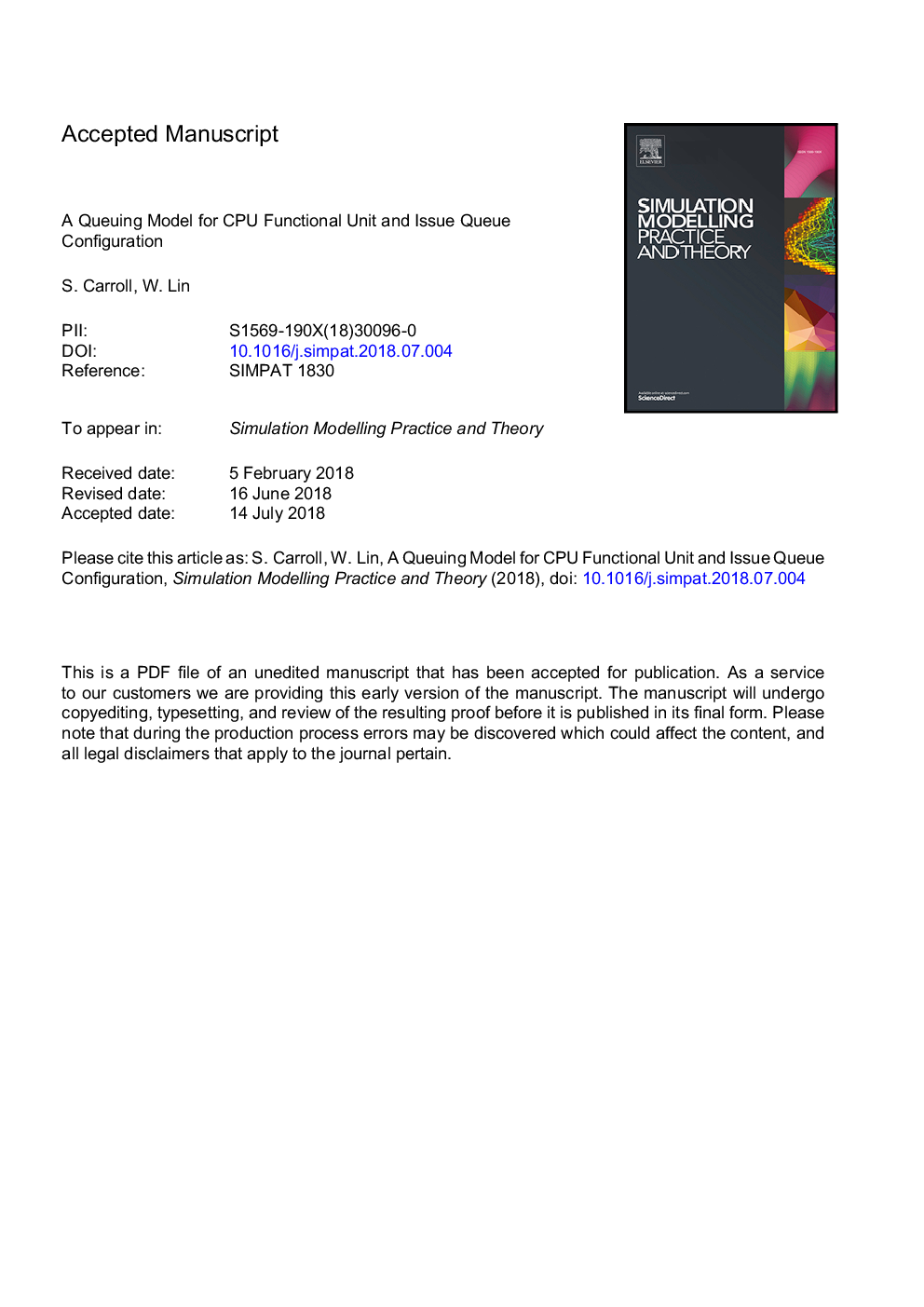| Article ID | Journal | Published Year | Pages | File Type |
|---|---|---|---|---|
| 6902484 | Simulation Modelling Practice and Theory | 2018 | 36 Pages |
Abstract
In a superscalar processor, instructions of various types flow through an execution pipeline, traversing hardware resources which are mostly shared among many different instruction types. A notable exception to shared pipeline resources is the collection of functional units, the hardware that performs specific computations. In a trade-off of cost versus performance, a pipeline designer must decide how many of each type of functional unit to place in a processor's pipeline. In this paper, we model a superscalar processor's issue queue and functional units as a novel queuing network. We treat the issue queue as a finite-sized waiting area and the functional units as servers. In addition to common queuing problems, customers of the network share the queue but wait for specific servers to become ready (e.g., addition instructions wait for adders). Furthermore, the customers in this queue are not necessary ready for service, since instructions may be waiting for operands. In this paper we model a novel queuing network that provides a solution to the expected queue length of each type of instruction. This network and its solution can also be generalized to other problems, notably other resource-allocation issues that arise in superscalar pipelines.
Keywords
Related Topics
Physical Sciences and Engineering
Computer Science
Computer Science (General)
Authors
S. Carroll, W. Lin,
